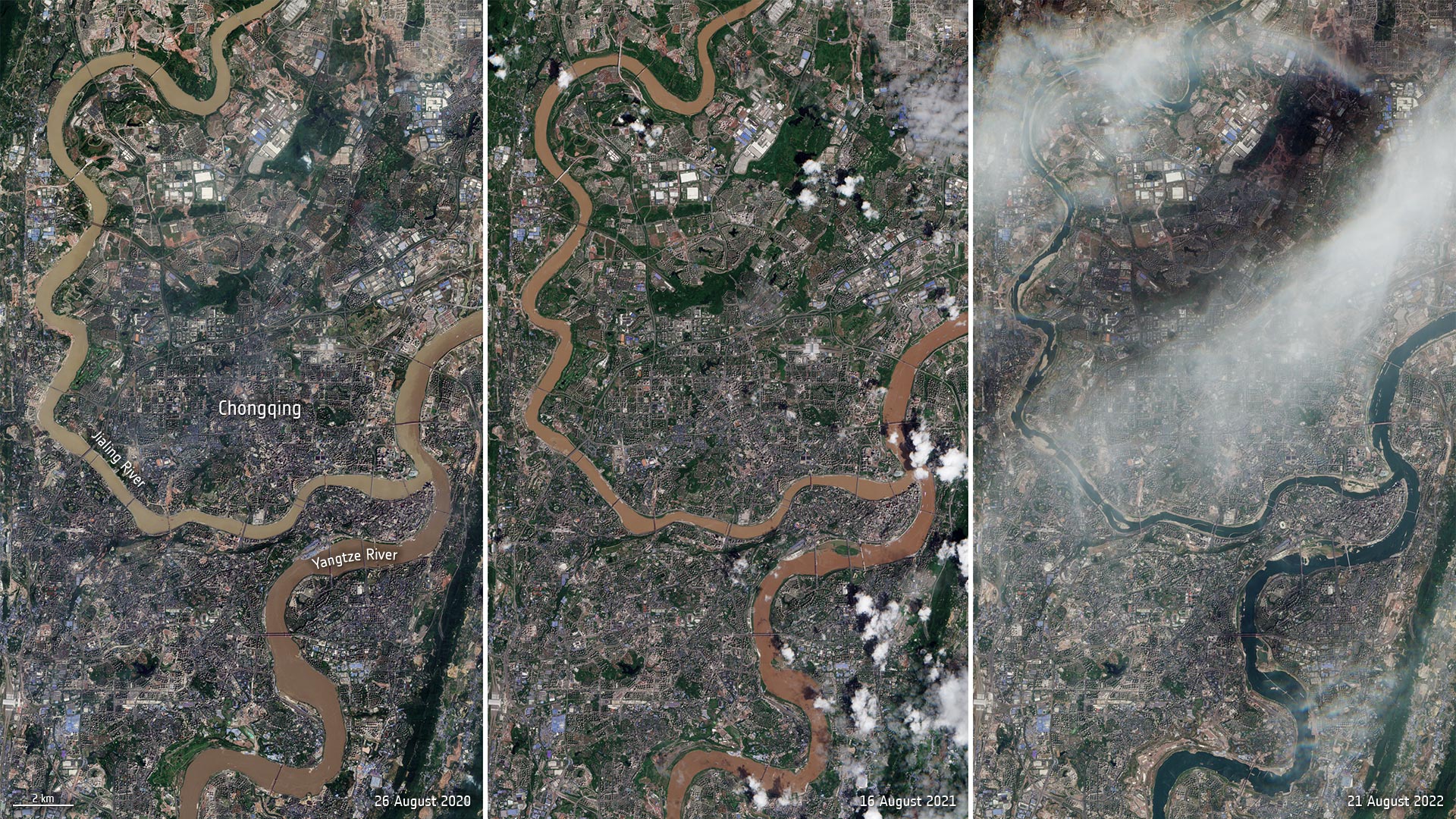Drought Causes Yangtze – China’s Most Important River – To Dry Up
Satellite images captured by the Copernicus Sentinel-2 mission show a comparison of the Yangtze and Jialing rivers, near Chongqing, over the last three years. Higher than normal temperatures increase the evapotranspiration of the river’s waters and, together with missing precipitation, result in lower water levels and sediment transportation downstream, which explains the significant color difference of the Yangtze in the August 21, 2022, acquisition. Several areas of dry and exposed riverbed can also be seen west of Chongqing. Credit: Contains modified Copernicus Sentinel data (2020-22), processed by ESA, CC BY-SA 3.0 IGO
A record-breaking drought has caused parts of the Yangtze River to dry up – affecting hydropower, shipping routes, limiting drinking water supplies, and even revealing previously submerged Buddhist statues.
As China’s most important river, the Yangtze provides water to more than 400 million Chinese people. This summer, with rainfall in the Yangtze basin around 45% lower than normal, it reached record-low water levels with entire sections and dozens of tributaries drying up. The loss of water flow to China’s extensive hydropower system has created problems in Sichuan, which receives more than 80% of its energy from hydropower.
The Yangtze is the longest river in Asia and the third-longest in the world. It rises at Jari Hill in the Tanggula Mountains (Tibetan Plateau) and flows 3,900 miles (6,300 km) in a generally easterly direction to the East China Sea.
Satellite images captured by the Copernicus Sentinel-2 mission show a comparison of the Yangtze and Jialing rivers, near Chongqing, over the last three years. Higher than normal temperatures increase the evapotranspiration of the river’s waters and, together with missing precipitation, result in lower water levels and sediment transportation downstream, which explains the significant color difference of the Yangtze in the August 21, 2022, acquisition. Several areas of dry and exposed riverbed can also be seen west of Chongqing.
Major rivers around the world are drying up as record-breaking heatwaves take their toll, including the Rhine and Po rivers in Europe as well as the Colorado River in the United States. Sentinel-2 is a two-satellite mission to supply the coverage and data delivery needed for Europe’s Copernicus program.
The mission’s frequent revisits over the same area and high spatial resolution allow changes in water bodies to be closely monitored, as well as measuring turbidity – giving a clear indication of the health and pollution levels of rivers around the world.

